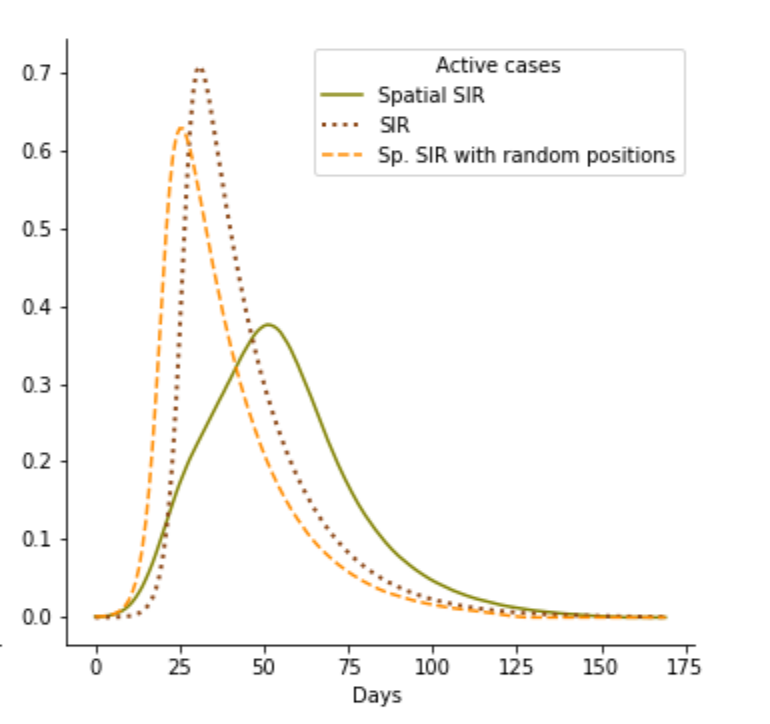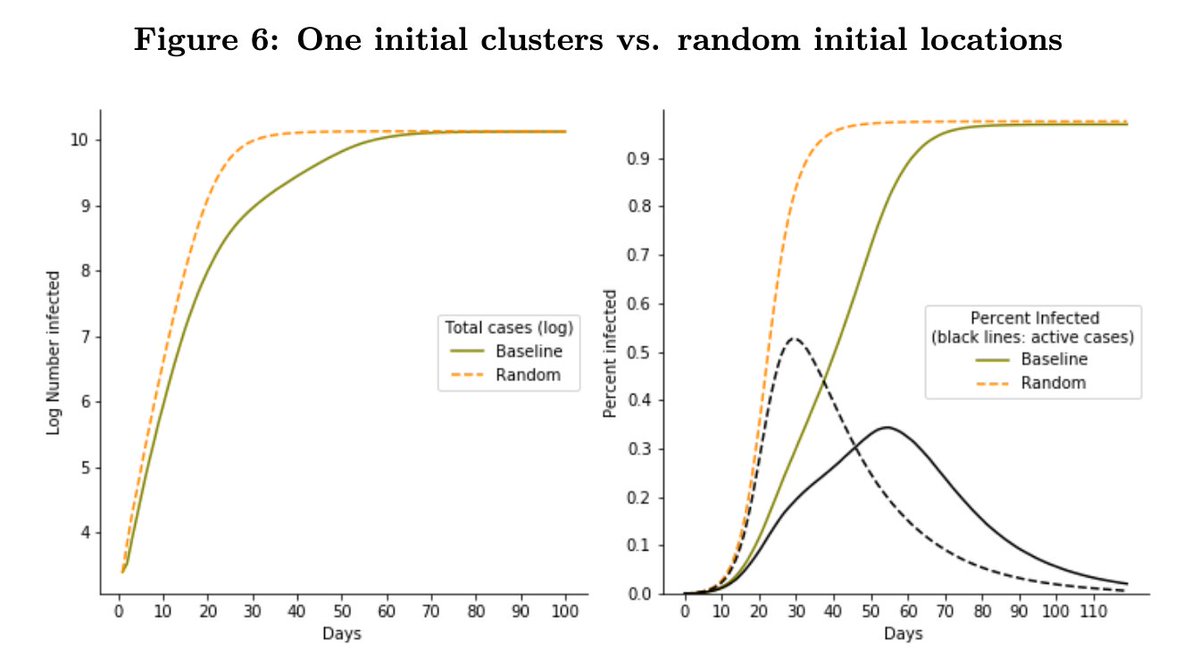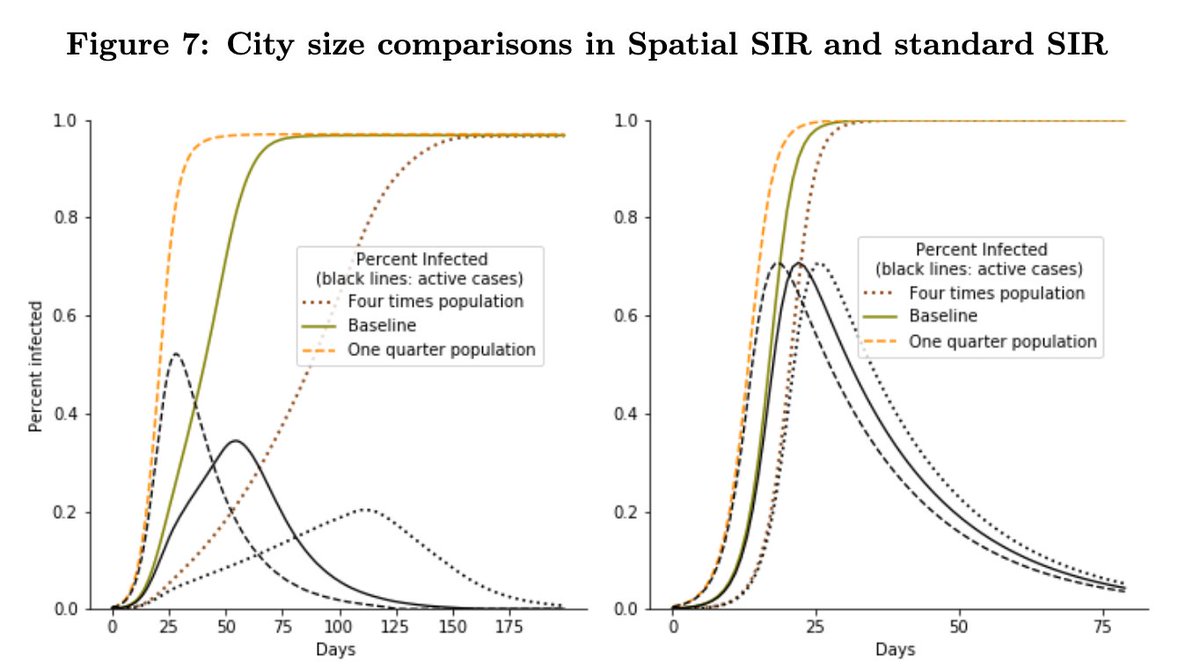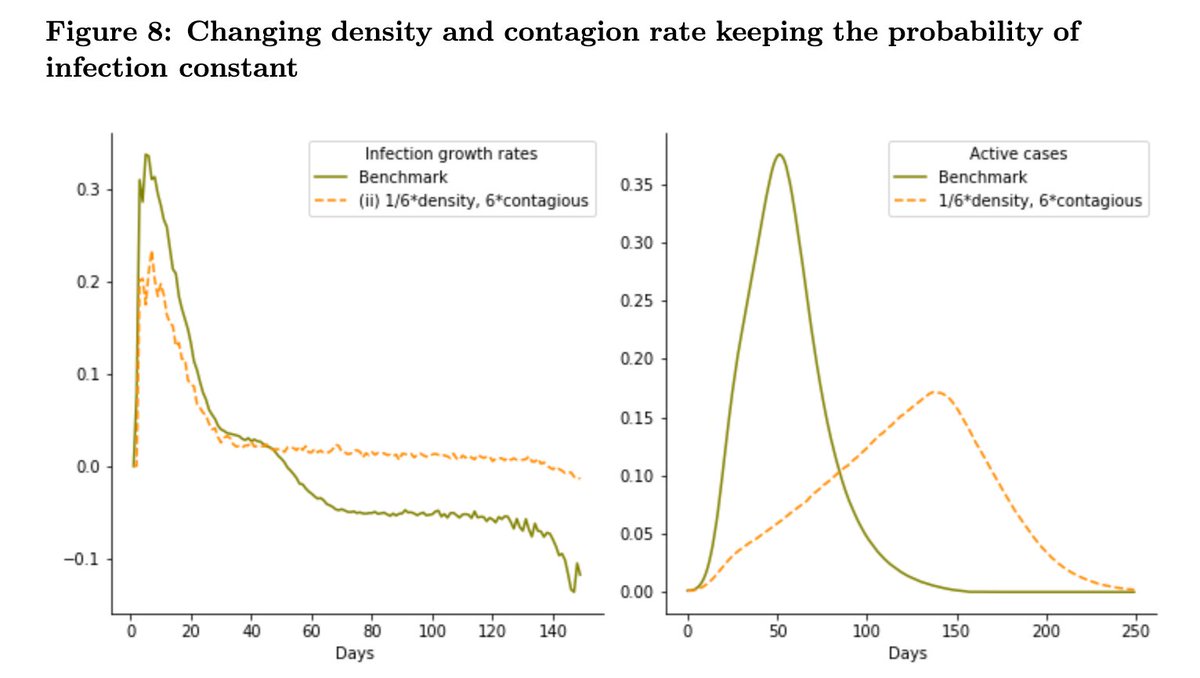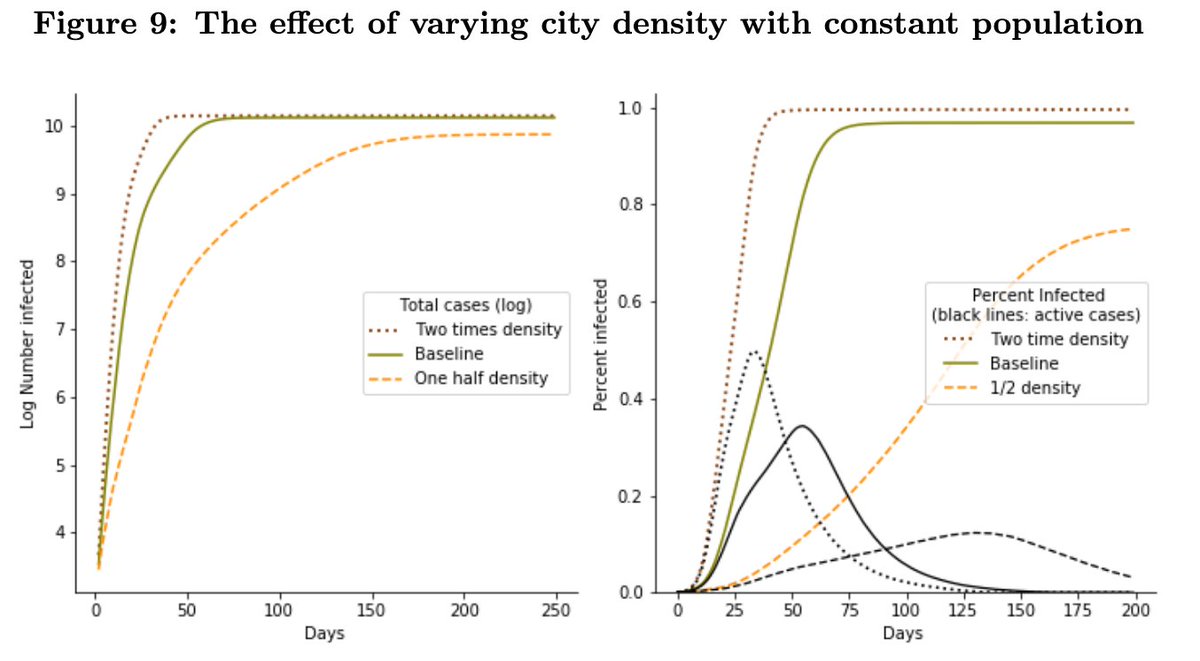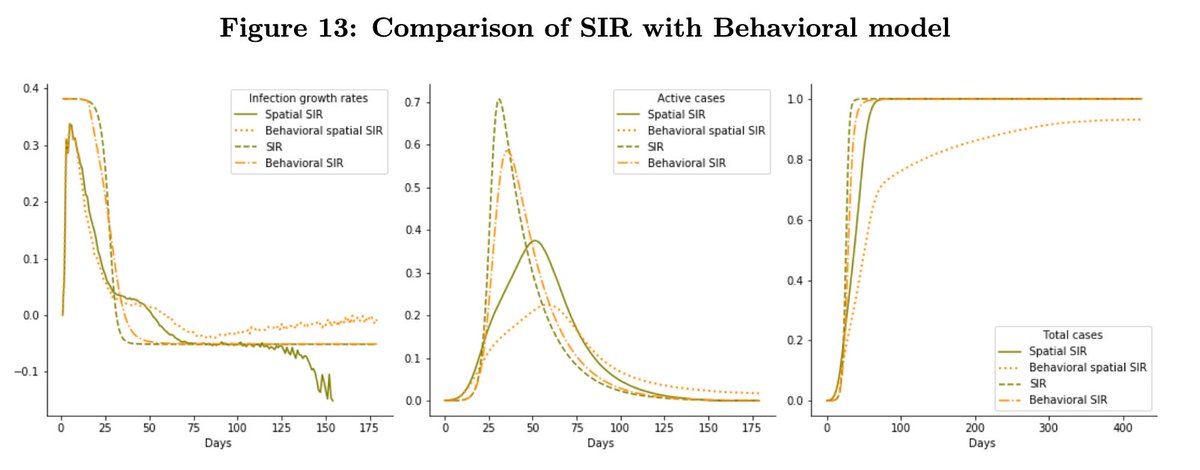A paper with @albertobisin: Learning Epidemiology by Doing: The Empirical Implications of a Spatial SIR Model with Behavioral Responses.
https://papers.ssrn.com/sol3/papers.cfm?abstract_id=3625361 1/
https://papers.ssrn.com/sol3/papers.cfm?abstract_id=3625361 1/
How does geography affect the diffusion of COVID-19? How can we compare the U.S. to Ireland? New York to Miami? How do we make sense of figures like this? 2/
In this paper, we simulate a Spatial SIR model with behavioral responses showing how geography places restrictions over the empirical predictions of the epidemic models 3/
A Spatial-SIR model is like a SIR, but people are placed in a 2-dimensional space. If they get close to an infected they may, with some probability, become infected. Every day, people travel to a different location with a given speed affecting the diffusion of the contagion 4/
Spatial-SIR differs from SIR for 2 related reasons: ➀ it separates the probability that contacts result in infection from the № of contacts people have ② it generates contacts when people move around ⇒ the matching between susceptibles and infected is not random as in SIR 5/
In SIR, you can increase the № of contacts and proportionally decrease the infection probability ⇒ nothing changes. In Spatial-SIR, because of ② the dynamics differ. When infection travels in space, a local herd immunity arises in initially infected areas 6/
If the same number of infections occurred randomly instead, the dynamics would be faster initially, but would be slower later because global herd immunity is reached sooner 7/
Size matters: In Spatial-SIR, keeping density constant, larger cities (with larger populations) have lower peak cases (but same steady state outcomes). In SIR, outcomes are basically the same (only timing is affected) 8/
Density matters. Increasing density (# of contacts) and reducing contagion rate by the same factor changes nothing in SIR. In Spatial-SIR, local herd immunity slows contagion initially in the less dense city, but faster global herd immunity slows it in the denser city later 9/
Changing density while keeping everything else constant has big effects on both the peak cases and the steady-state. This is, in principle, testable. We also show the effects of increasing the number of initial outbreaks, and speed of people movements. 10/
We also add behavioral responses to the model: people self-isolate in response to the progression of the infection. We show that in Spatial-SIR they have qualitatively different effects than in SIR, complicating empirical analysis that ignores such responses 11/
Our model highlights cross-city restrictions for SIR and Spatial-SIR that are in principle testable and can inform the estimation of these models. It also highlights a time-varying heterogeneity that makes it difficult to rely on 2-Way DiD design to test effect of policies 12/
We had two great in-house (virtual) seminars - fun and useful - thanks to all and especially to @MilenaAlmagro, @clementi_gl, @pedrohcgs and others not on twitter 14/
Bonus tweet: a movie that shows how the model scales: the city on the right has 4*the area, 4*the population, 4* the initial cluster in symmetric locations. The dynamic as a fraction of the population is identical. 15/end
We're all on top of the mountain trying to figure out how to get down. Let's try not to curl into a ball, roll and crash https://xkcd.com/2300/ 13/
We had two great in-house (virtual) seminars - fun and useful - thanks to all and especially to @MilenaAlmagro
, @clementi_gl
, @pedrohcgs
and others not on twitter 14/
, @clementi_gl
, @pedrohcgs
and others not on twitter 14/
Bonus tweet: a movie that shows how the model scales: the city on the right has 4*the area, 4*the population, 4* the initial cluster in symmetric locations. The dynamic as a fraction of the population is identical. 15/end

 Read on Twitter
Read on Twitter

